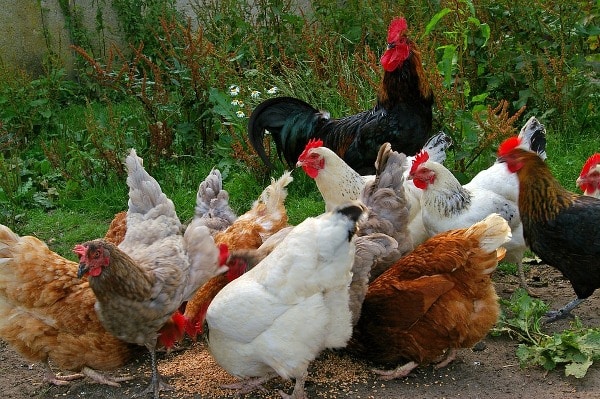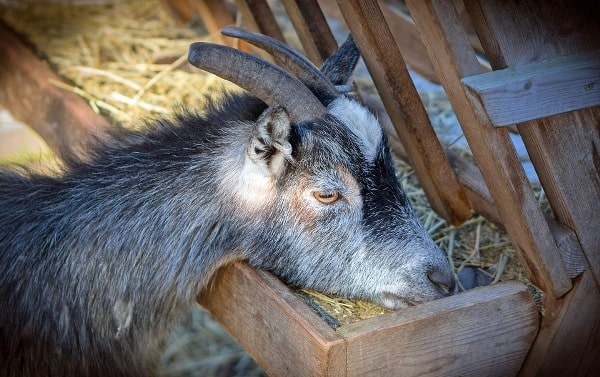Guide on using salt in livestock feed
Animal feed salt is an essential addition to livestock feed. Salt maintains the mineral balance of the animals at the right level and keeps livestock healthy. Salt as an essential commodity, not only to humans but also for all livestock animals.
Animal feed supplements are substances that are added to animal feed to complement the nutrient composition of the feed. There are different types of supplements added to animal feed ingredients but the supplement of importance in this context is salt. Today, salt is one of the cheap and ubiquitous natural resources, it plays a remarkable role in nutrition, not only human nutrition as you can presume but also in animal nutrition.
Salt is used to balance the animal feed or nutritional requirement for sodium (Na) and chlorine (Cl). According to the National Research Council, these requirements vary between 0.10 to 0.25 percent in any diet for most species of poultry farms and pigs.
For instance, salt contains 39.5 percent of sodium and 60.5 percent of chlorine, then adding 0.5 percent salt in a diet provides about 0.20 percent Na and 0.30 percent Cl. It is evident, therefore, that the 0.5 percent salt rule of thumb was created to ensure diets have enough sodium. The more chlorine is being excreted through urination. If you are into commercial livestock farming, you must be aware of the importance of salt in livestock feed.
Roles that salt plays in Livestock diet:

Very briefly, sodium and chlorine are major electrolytes that contribute to the maintenance of cellular membrane electrochemical gradient also known as the membrane potential.
They are involved in the digestion (HCl in the stomach), absorption (Na) and transportation of nutrients from the intestines into the bloodstream. They contribute to the maintenance of blood volume and pressure, and they participate in the renin-angiotensin-aldosterone system. It is apparent from this impressive list of functions that sodium and chlorine are absolutely essential for the organism and life itself.
Livestock and animal salt
Using salt to supplement livestock and animals’ diets is essential to their health, as well as their production. Salt is made up of two vital nutrients they are sodium and chloride. Sodium or Na is necessary for the animals’ nervous system, muscles, blood, and other required functions. Chloride benefits are the blood and aids in digestion. This essential mineral has a huge impact on livestock production.
Many animals will regulate their own salt intake, as long as a source is obtainable. However, there are certain times when more salt is necessary. For example, the heat will cause animals to lose more salt through sweat and urine. The same loss of salt happens during times of extreme humidity. Especially when the animal is consuming more water, salt intake could need to be doubled.
Deficiency of salt in Livestock Feed
Severe deficiency of sodium and chloride in animal or livestock feed leads to cerebral edema, seizures, coma, brain damage and eventually death. A mild deficiency of sodium and chloride in animal feed is evident in the form of loss of productivity in all classes of all animals. Today, a deficiency in salt is possible when there is an error in the process of mixing the feed or during formulation.
This is not as rare as one might imagine as such errors occur without noticing until it is too late. In most cases, it is a matter of not adding sufficient salt, which then leads to suboptimal productivity and loss of profit.
When using salt to limit intake of feeds or supplements follow these below things;
- The proportion of salt to limit intake in self-fed mixtures will differ from 5 to 60 percent.
- The amount of salt required will be determined by the desired feed or supplement intake.
- Use plain white salt. Coarsely ground salt is improved than finely ground salt.
- Logically, to raise supplement intake, decrease salt in the supplement. To reduce supplement intake, increase salt in the supplement.
- As the weight of the animal increases, the amount of salt required to limit intake of the supplement to the desired level will need to increase.
- To assure that calves do not over-eat, set the levels high the first 2 to 3 days and consider hand-feeding the feed or supplement.
- To prevent the partition of feeds in the supplement, particle size needs to be similar. That’s the cause for the recommendation to use coarsely ground salt.
- If grains are included, they must be cracked or coarsely ground.
- If the water that is obtainable for the cattle to drink when salt is used as a feed limiter is above 5,000 ppm Total Dissolved Solids (TDS) caution is necessary.
- Feeders must be portable and feed protected from wind and rain.
- The strategic position of the feeder can impact grazing distribution.
Read: Kaju Cultivation Techniques.
The role of salt in animal nutrition:
Common salt contains both sodium and chloride and is also known as sodium chloride. Salt is unique in that animals have a much better appetite for the sodium and chloride in more salt than for other minerals. In addition, animals have a definite appetite for salt, it could be used as a delivery mechanism to ensure adequate intake of less palatable nutrients and as a feed intake limiter.
Even though the body contains about 0.2% sodium, it is essential for life and is highly regulated. About half of the sodium is contained in the body is in the soft tissues of the body; the other half in the bones. Sodium makes up about 93% of the essential mineral elements in the blood serum and is the chief cation regulating blood pH. The capability of muscles to contract is dependent on proper sodium concentrations. Sodium plays main roles in nerve impulse transmission and the rhythmic maintenance of heart action. Efficient absorption of amino acids and monosaccharide from the little intestine requires adequate sodium.
The other nutrient in salt, chloride is essential for life. Chloride is the main anion in blood and represents about two-thirds of its acidic ions. The chloride shift, movement of chloride in and out of the red blood cells, is necessary for maintaining the acid-base balance of the blood. Chloride is a necessary part of the hydrochloric acid produced by the stomach which is required to digest most foods. Unfortunately, it is often assumed that if the sodium requirement is met, the chloride necessity will automatically be met also. However, recent evidence indicates this could not always be the case. A close correlation between potassium and chloride in the urine of cows. They concluded that the essential for the ruminant to eliminate high amounts of dietary potassium (as potassium chloride) can dramatically increase the chloride requirement. Therefore, since several ruminant feedstuffs are quite high in potassium, the potassium-to-chloride ratio in the diet is important.

Effects of Saline water on salt availability:
In many regions of the world, the available water supply for consumption by animals is saline. Coastal waters can contain up to 200 mg/L Na, or even more in some extreme cases. In such cases, this fact should be taken into account when formulating diets.
This is done by reducing proportionately the salt in the feed or avoiding ingredients rich in salt (for example, fishmeal, whey, blood products, etc.). Otherwise, animals enter into a futile circle of trying to detoxify excess salt by using saline water, only creation salt toxicity a chronic, subclinical condition.
Read: Neem Oil Extraction Methods.
In mild cases, mild diarrhea can appear and remain persistent as long as the problem continues due to a disruption of the anion-cation balance. In severe cases, salt poisoning ensues, tantamount to trying to quench thirst by drinking seawater.
Factors affecting salt needs:
Several factors that influence salt needs are as follows:
- Diet can have a huge impact on the salt needs of animals. Diets containing different amounts of concentrates, pasture, hay, silage or byproduct feeds account for much of the difference in salt requirements due to the wide range of sodium and chloride concentrations.
- The level of sodium, chloride and other minerals in the water is another main factor. Animals typically will consume 2 to 3 times as much water as dry food. Locality can have the main impact on the minerals present in the water and, thus, the need for salt.
- Level of production can have a great influence on the requirements for supplemental sodium and chloride. For example, cow’s milk contains roughly 630 ppm sodium and 1150 ppm chloride. As milk production increases, so do the need for salt.
- The temperature and humidity can be a very important factor. During heat stress, certain animals could lose large amounts of sodium through sweating. For example, working horses have been shown to increase their salt consumption fivefold through heat stress. Providing free-choice salt is the best system to meet individual needs in this situation.
- Availability of sodium and chloride in feeds can be over-estimated. Recent work with forages suggests that mineral availability decreases with plant maturity as more and more of it is associated with the indigestible fiber fraction.
- Potassium concentration in the diet could influence requirements for sodium and chloride. Sodium is necessary for the kidney for potassium conservation and to balance bicarbonate excretion electrically. An excess of potassium could aggravate a marginal sodium deficiency. This can even happen when high forage (pasture, hay or silage) diets are fed. For example, certain pastures can have up to 18 times more potassium than sodium. This helps explain why cattle decide to consume more salt on high forage diets than on high concentrate diets.
- Genetic differences in livestock animals affect salt requirements. As we choose animals for maximum performance while being fed diets with greater caloric density, sodium and chloride concentrations necessary to achieve maximum performance may be increased.
Feed ingredients that rich in salt:
Feed ingredients rich in sodium and chloride are fishmeal, whey and derivatives, and blood products. In fact, the combination of these ingredients in expensive diets generally exceeds requirements for sodium and chlorine.
This makes it necessary for young animals (piglets and broilers) have access to non-saline water when fed diets based on such ingredients. In fact, when saline water is the source of water available, such ingredients should be avoided completely.
The plasma can contain up to 5 percent Na and 2 percent Cl, whereas fishmeal contains no more than 1 percent of each nutrient. Similarly, meat meal contains about the same concentration of salt as fish meal, and this must be taken into consideration where this ingredient is allowed in animal diets.
On the other hand, another usually used ingredient (nowadays even in early broiler super starter feeds), whey contains about one percent Na and 1.5 percent Cl. Mainly a protein source and other main lactose contain even higher levels depending on the degree of protein and ash concentration achieved through the removal of components.
That’s all folks about Importance of and Role of salt in livestock feed.
Read: How to Grow Hydroponic Strawberries.